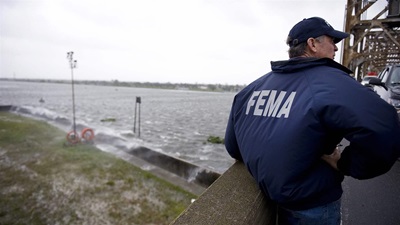Higher Education’s Uncertain Fiscal Future
Public Colleges, Universities Are Squeezed by Federal Cuts, Enrollment Challenges, and State Budget Strain

In times of financial strain, state lawmakers often cut higher education funding first, expecting that federal funds and tuition dollars will help, temporarily, to make up the gap. For most states, higher education is their third-largest expenditure. States tend to spend more only on K-12 education and Medicaid, which typically are governed by funding formulas and federal match requirements that make cuts to that spending more complicated. Higher education funding, however, has become known as the “balance wheel” of state budgets because of its flexibility, frequently oscillating between cuts when conditions are tight and restoration as budget conditions improve.
But as states are facing their own budget crunch, they not only are unable to help universities but also in many cases are exacerbating universities’ struggles with further funding cuts. With tax revenue stagnating, spending pressures rising, and federal uncertainty looming, many states are either planning or already implementing higher education funding cuts.
This trend played out during 2025 legislative sessions as lawmakers in at least 15 states proposed or enacted broad or targeted cuts to public university and college funding, according to a Pew Charitable Trusts analysis. Even in states that avoided outright cuts, flat funding or small increases effectively translated into reductions for many institutions after accounting for inflation and rising operating expenses.
In Virginia, Governor Glenn Youngkin paused a total of $600 million in funding requests for 10 higher education infrastructure projects in May, a move aimed at safeguarding the state’s fiscal stability amid uncertain national economic conditions. In Washington, the State Legislature dealt a 1.5% cut to all public four-year higher education institutions as part of an effort to close the state’s $16 billion budget shortfall over the next four years. And in South Dakota, lawmakers cut $9 million for campus maintenance and repair to help balance the fiscal 2026 budget, prompting a warning from university presidents that deferring capital costs and maintenance can create more expensive problems down the road.
The ripple effects of these budget decisions are likely to intensify as the impact of federal changes on higher education and state budgets becomes clear. Many public university systems are making tough decisions on how to implement cuts, resulting in higher tuition, hiring freezes, and layoffs to account for the loss of state and federal funding.
In fact, the president of the University of California system warned state legislators in September that “recent actions by the federal government, with the distinct possibility of more to come, place the entire University of California at risk” and would cost an additional $4 billion to $5 billion per year to compensate for federal funding cuts.
State university systems in Connecticut, Kansas, Maryland, Minnesota, Missouri, Nebraska, New Hampshire, and Wyoming are taking cost-cutting measures to address significant budget shortfalls. For example, the University System of Maryland’s Board of Regents cut its fiscal 2026 budget by 7% to help offset a $155 million reduction in state funding. The new budget also hikes tuition and raises fees. It’s the second straight year of budget cuts, and while leaders aim to limit the impact on employees, they cautioned that furloughs or pay cuts could still be necessary at some campuses.
As states navigate this shifting fiscal landscape, higher education’s other funding streams—federal funding and tuition revenue—are also under pressure. Colleges and universities will have to work with legislatures to figure out how to address these new challenges, as well as long-standing threats.
A steep decline in federal grants and research funding
Many universities rely heavily on grants and contracts from the federal government. In recent years, federal grants and contracts have ranged from 7.4% of total revenue at all public colleges and universities in fiscal years 2017 and 2018 to as much as 8.7% of total revenue in fiscal 2022.
That share could shrink if proposed federal funding cuts become law. President Donald Trump’s preliminary fiscal 2026 budget includes significant cuts to agencies that are some of the largest funders of university research, including a nearly $18 billion reduction in funding to the National Institutes of Health (NIH) compared with fiscal 2025 and a $5.1 billion reduction for the National Science Foundation (NSF) since fiscal 2024. This could lead to steep cuts in federal funding for research and development work at U.S. institutions of higher education. Such funding totaled $60 billion in fiscal 2023, the most recent year for which data is available.
These proposed cuts follow a change that NIH announced in February that limits the portion of grant funding universities can allocate to indirect costs, such as facilities and administration. The new 15% cap on these costs means that researchers may need to find other sources of funding to cover the difference, or they could stand to lose significant revenue and be forced to conduct less research. Other major federal funders of university research—such as the Department of Energy, NSF, and the Department of Defense—have since followed suit with their own 15% caps. These decisions, which are being challenged, highlight some of the major changes underway in funding higher education research.
Universities that derive a larger than average share of their revenue from federal grants and contracts are more vulnerable to these changes. Some public universities, such as the University of Michigan and the University of Alabama at Birmingham, receive over a quarter of their revenue from federal sources, according to the most recent data available.
Furthermore, major research universities serve as economic hubs for their regions, and changes to funding structures could have ripple effects on the surrounding communities and their economies. For example, Michigan State University is one of the largest employers in the Lansing area and receives more than 20% of its revenue from federal grants and contracts. The university eliminated 83 positions because of federal funding cuts and 99 others because of budget challenges, including “disruptions to federally funded research.” Furthermore, the university identified at least 160 projects that were either terminated or otherwise affected by actions such as stop work orders, pauses on funding decisions, and conditional terminations.
Universities have weathered previous state funding downturns with similar cuts and, in the more extreme cases, with campus closures. For example, during the COVID-19 pandemic, “college leaders learned essential lessons for how to manage austerity, financial uncertainty and disruptions to business as usual. Those lessons are now going to be put to a sterner test because of the sweeping nature of the policy changes along with the volume of the funding cuts pursued by the Trump administration,” Michael T. Nietzel, former president of Missouri State University, wrote for Forbes. “Higher education’s new financial crisis has begun,” he warned, “and it may last a long time.”
Enrollment challenges and tuition complications
Higher education officials at public universities are also worried about the slumping fertility rate in the U.S. and what it means for tuition and fees, which made up almost 20% of public university revenue from 2014 to 2023. Fewer babies being born eventually means fewer high school graduates and increased fears of declining university enrollment—and tuition dollars.
While the fertility rate has been gradually falling for decades, the downward trend accelerated during the Great Recession of 2007-09. Undergraduate enrollment in public and private universities peaked in 2010, right after the Great Recession, then declined through the 2022-23 school year. The COVID-19 pandemic created further disruptions for colleges, leading to decreases in both enrollment and student retention. It wasn’t until the 2024-25 school year that total postsecondary enrollment (undergraduate and graduate) surpassed pre-pandemic numbers, but that increase was driven primarily by graduate students; undergraduate enrollment grew but still remained below pre-pandemic levels.
Following the increased enrollment of the 2024-25 school year, forecasts differ as to when the next phase of enrollment declines will begin. The Western Interstate Commission for Higher Education projects a steady decline in college-age students starting in 2026 as babies born in 2008 graduate from high school—creating fears of a new demographic downward shift for already struggling campuses if matriculation rates don’t increase to make up the difference. While this inflection point is often characterized as a “demographic cliff,” the data suggests that a sudden drop-off is unlikely. Instead, even if the fertility rate ticks back up, the declines from 2008 to 2023 will probably ripple through college campuses for at least the next 15 years, compounding enrollment concerns. But despite the downward pressures, the National Center for Education Statistics predicts that enrollment levels will remain steady through at least 2031. Additionally, it’s likely that higher education enrollment rates will not be uniform across the country. The South is expected to see a small uptick in high school graduates from just before the pandemic through 2032, even as every other region declines, and increases of more than 14% are predicted in Idaho, North Dakota, and Utah—bucking regional trends.
Higher education enrollment rates are also driven by factors such as whether students decide to attend college at all; older adults pursuing degrees; and the number of students attending from other states and abroad. For example, the federal government’s temporary pause on review of student visas in the spring of 2025 may have had ripple effects on how many international students were able to obtain visas in time to enroll for the fall semester at U.S. institutions, given the delay in processing time created by the pause. Arrivals data for international students entering the U.S. shows that August saw the largest decline on record (except during the pandemic) of international students entering the U.S.—an almost 20% drop from the same time last year. International students pay full out-of-state tuition, generating reliable revenue for schools—especially those with higher populations of international students such as universities in Arizona, Illinois, and Texas—and a drop-off in those dollars could make it harder for universities to balance their ledgers.
Final thoughts
State funding has typically been a steady source of revenue for public universities, enabling them to cushion the blow from external pressures. However, states themselves are tightening their belts because of economic turbulence and federal policy changes, leading to flat or reduced higher education appropriations.
While new risks to steady revenue may constitute a reckoning for higher education, this is not the first time in recent memory that public colleges and universities have faced a crossroads. During the Great Recession, severe cuts were made in appropriations from state governments, and the pandemic transformed how universities operated for years and resulted in students leaving or putting off college. In each scenario, institutions of higher education adapted to the strain of the fiscal conditions in which they found themselves.
What remains to be seen is whether any future return to more stable fiscal conditions will bring balance to higher education funding once more, or whether these challenges are now a permanent part of the landscape.
Page Forrest is an associate manager and Riley Judd is a senior associate with The Pew Charitable Trusts’ Fiscal 50 team. Samuel Pittman is an associate with Pew’s managing fiscal risks team.












